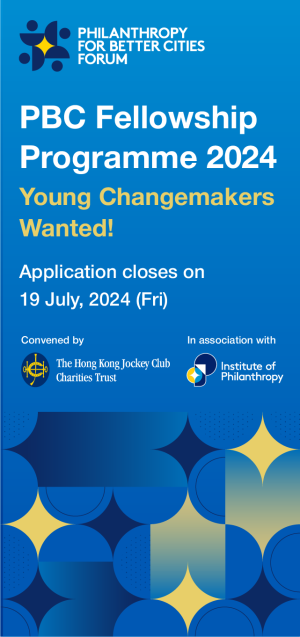Cricketers of the past typically did one thing well, now most of them are deeply engaged in every facet of the game and think of the big picture. The same is true of philanthropy.
Goodbye charity, welcome engaged philanthropy.
What may appear to be just a cosmetic change to the uninitiated is actually much more than that. Engaged philanthropy goes beyond the earlier norm of making a one-time contribution and providing one off financial support. Philanthropists today, seek not only to give but also to actively participate in ensuring that their contributions create tangible and lasting impact.
In some ways, contemporary philanthropy is like cricket. The game’s earlier avatar required most players to do their bit and not much else. Players still have their core strengths, but now, as we see in the ongoing Indian Premier League (IPL), they are expected to go beyond their primary role and be engaged in every facet of the game till the match is won.
There is another significant way in which philanthropy has changed.
Traditionally, philanthropy in India, like in many parts of the world, manifested itself through donations in kind, such as food and clothes. However, the last two decades have witnessed a significant surge in monetary donations, the philanthropic equivalent of fours and sixes, so to speak. According to the latest India Philanthropy Report 2024 published by Bain & Company and Dasra, Private Giving has seen a 10 percent growth in FY 2023, reaching USD 15 billion (INR 1.2 lakh crore) due to increased contributions from family philanthropy and retail donors.
While the growth is heartening, the report also cites challenges to giving that include lack of support platforms to facilitate knowledge and understanding of how to give, and that is where engaged philanthropy can be a game changer.
‘When individuals spend time meaningfully, getting to know the non-profits and understand their challenges, it results in deeper and greater understanding of the cause, and sustained support on the part of the giver’
My own personal journey of engaged philanthropy began in 2012 with Social Venture Partners India (SVP), a movement that originated in the United States. SVP India’s mission is to bring about impactful change by uniting individuals who commit not just funds but also time and expertise. Working across eight Indian cities, SVP India welcomes people who are interested in diving deeper in to the development space and uncovering their philanthropic passion, be it in education, women’s empowerment, health, livelihood or any of a plethora of causes.
Many new givers who still perceive giving in the context of relief and short-term fixes, are pleasantly surprised to see the direction that the development sector has taken – with strategic thinking, catalytic initiatives and highly qualified professionals working to address some of India’s stickiest problems. When individuals spend time meaningfully, getting to know the non-profits and understand their challenges, it results in deeper and greater understanding of the cause, and sustained support on the part of the giver.
Contrary to the perception that engaged philanthropy is the domain of large donors, it is in fact accessible to every citizen, irrespective of age or financial standing. A great example is ‘Youth for Philanthropy’ at SVP India, which is a movement engaging the youth to volunteer with not-for-profits in a structured mentor-mentee model. Katalyst India, a Mumbai-based NGO that supports young women looking to build their career in STEM fields, also employs this model. Through this approach, a large cohort of mentors supports mentees in navigating the challenges of entering mainstream employment.
Today, there are hundreds of professionally managed NGOs across India, who require support in areas like human resources, finance and budgeting, strategy, leadership and marketing & communications. So there is a great deal of scope for engagement by seasoned professionals who can contribute time, knowledge, networks and wisdom.
In terms of focus areas, the landscape of engaged philanthropy is diversifying. While education remains a priority, there is a noticeable shift towards emerging concerns such as waste management, environmental conservation, water resources, mental health and animal welfare.
Engaged Philanthropy is not just democratising giving for non-profits but for donors as well, by making giving more accessible and inclusive. In many cases the ‘giver’ ends up receiving so much, in terms of fulfilment, kinship and gratitude. The engaged philanthropy model allows individuals to choose causes close to their heart, fostering a more comprehensive and responsive approach to societal challenges.
Going forward, given that the number of HNIs and affluent individuals is expected to grow to 1.7 million, representing a cumulative net worth of USD 5.75 trillion (INR 460 lakh crore), the India Philanthropy Report predicts that giving will continue to rise steadily.
However, to match this growth, we will need structured platforms and frameworks to channel efforts effectively. According to a Sattva Consulting study, just a handful of Indian non-profits had incomes of over INR 100 crore, and many Indian NGOs are struggling to scale.
Organizations like SVP India can play a role in addressing these challenges, bringing together a network of philanthropists who are ready to pledge both intellectual and financial capital.
We have been fortunate to see a great deal of progress in the sector over the past decade. If we embrace engaged philanthropy, we can leverage this momentum to tackle other pressing issues and actively participate in shaping a better future for generations to come. And if that happens, a lot of problems would get caught and bowled.
Govind Iyer is the Founding Board Member and All India Chairperson of Social Venture Partners in India (SVP India).





Comments (0)